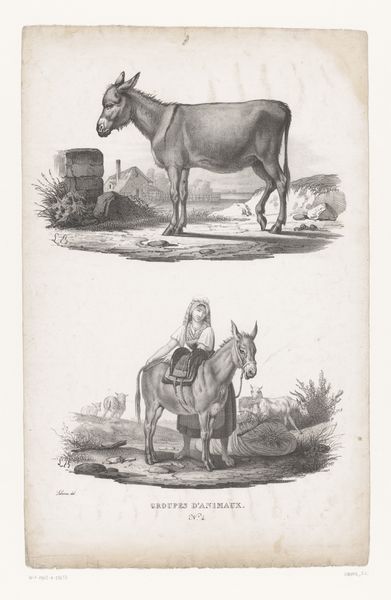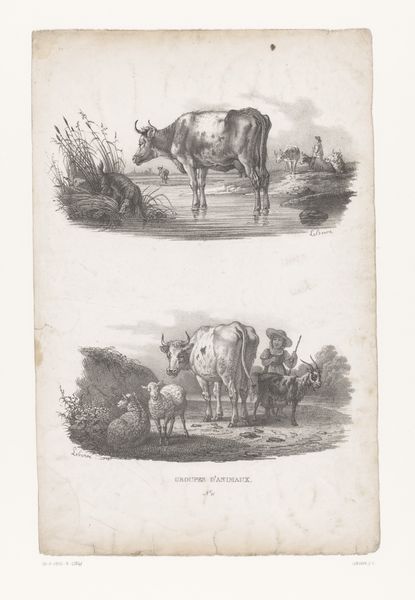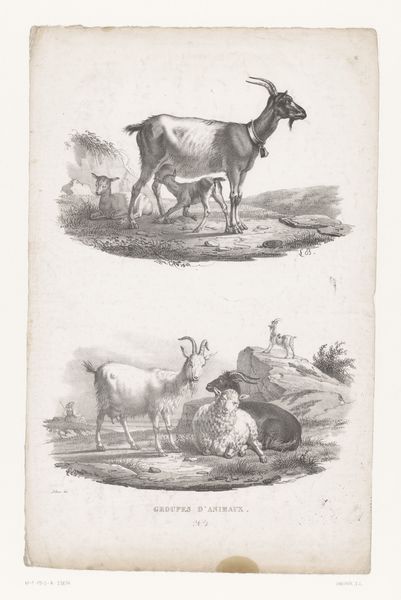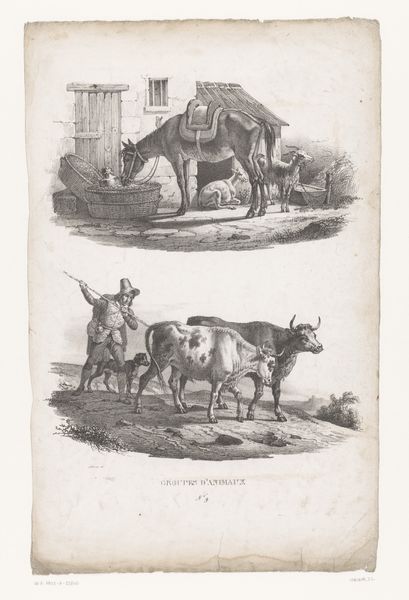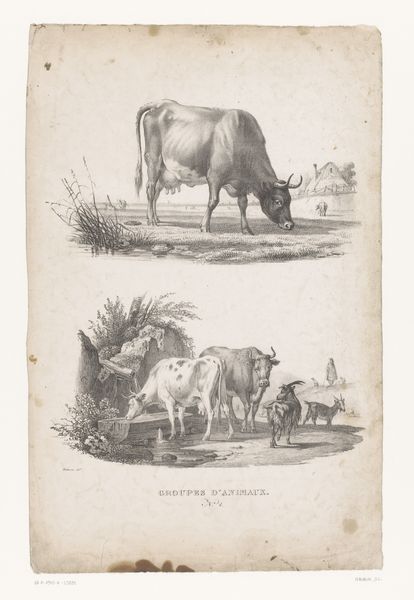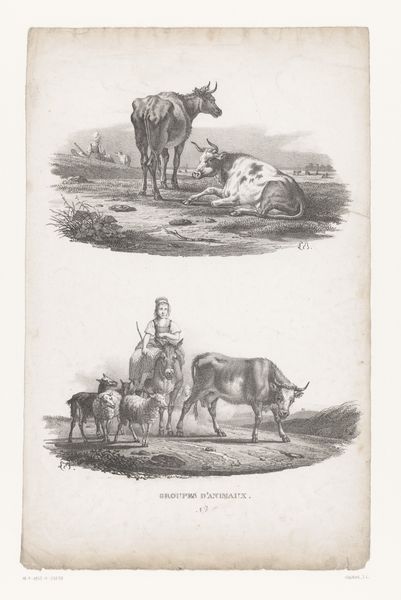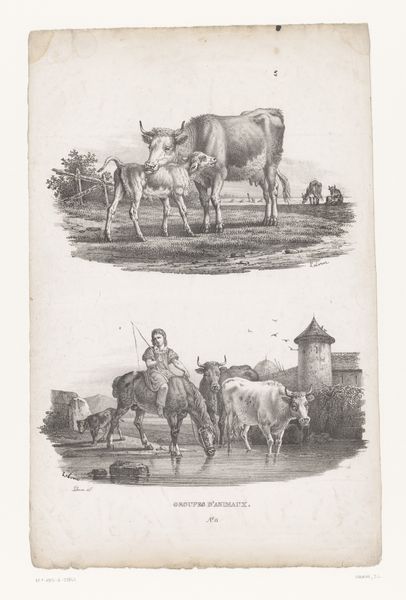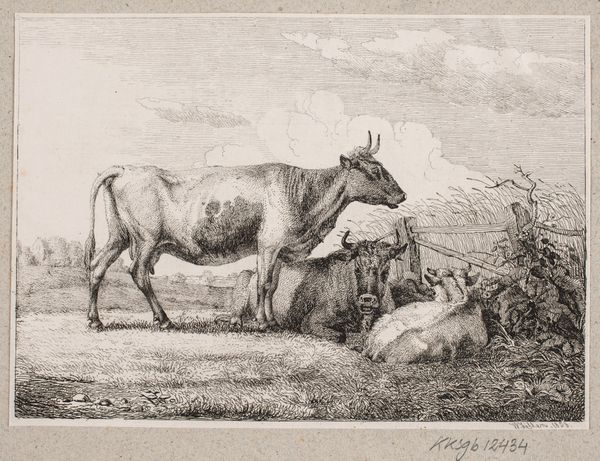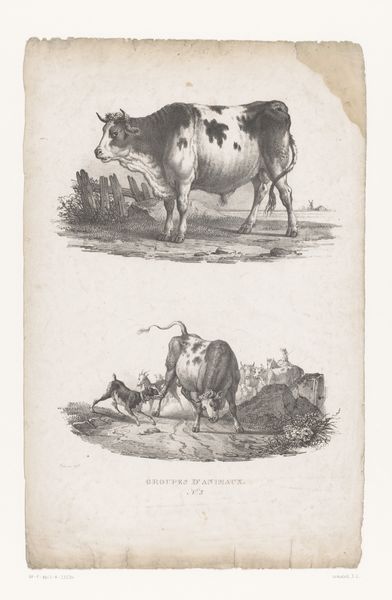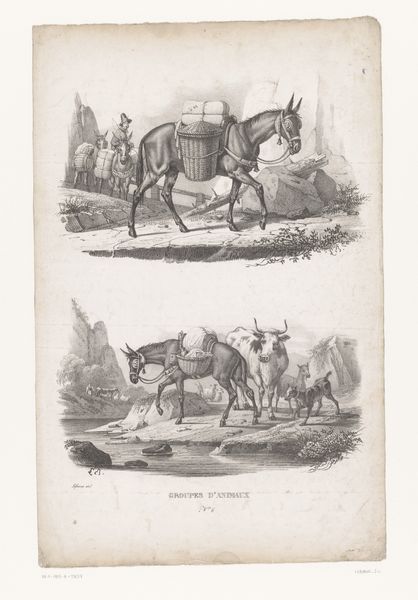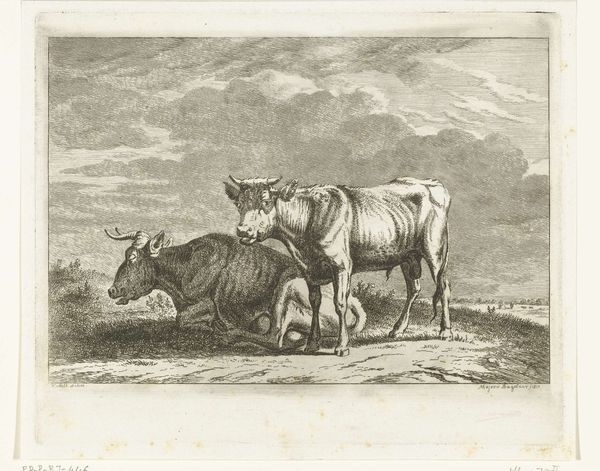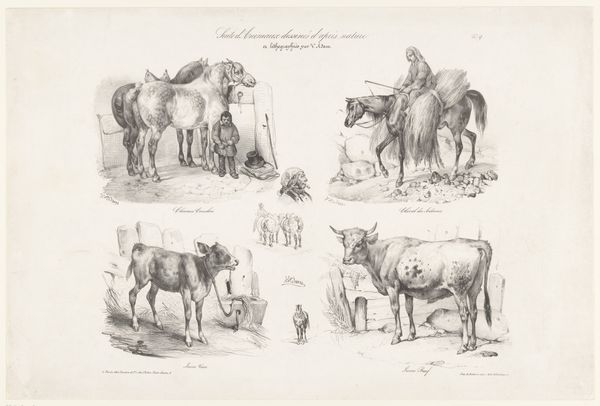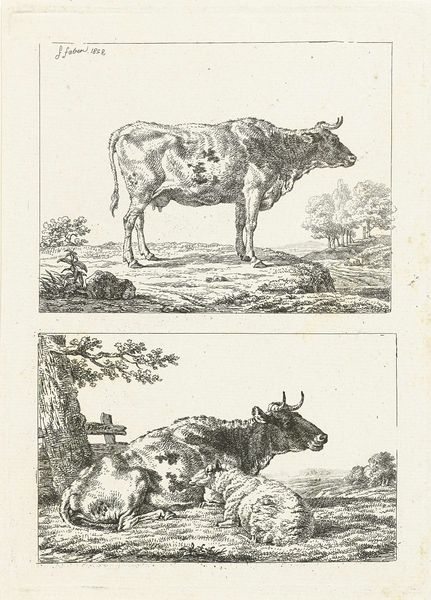
drawing, print, engraving
#
drawing
#
animal
# print
#
landscape
#
genre-painting
#
engraving
#
realism
Dimensions: height 472 mm, width 300 mm
Copyright: Rijks Museum: Open Domain
Curator: What strikes me first is the gentle quality, almost a meditative peace, about this engraving. It feels like a world pausing for a breath. Editor: It’s interesting that you say that, given the focus. This is Joseph Louis Leborne’s "Ezel met ezelsveulen en herder met schapen en runderen," made around 1828-1829. Grouped animals indeed! A clear nod to the rising interest in rural scenes that catered to urban audiences' desire for idyllic simplicity. Curator: It does capture that desire, doesn't it? You’ve got this calm donkey mother with her foal, practically posing next to a fluffy sheep like they're old friends. And below, that shepherd, completely blending into the scenery... it's like nature itself is watching over everything. Editor: Precisely! And note how this fits within the Romanticism's broader valorization of the pastoral—it's not just about prettiness. It speaks to broader social ideas of natural harmony. Curator: I do wonder if the focus on the animals is maybe downplaying the very human element of control. A shepherd, even a drowsy one, shapes that landscape, just as those lines shaped this image from within, the hand being very evident. There’s a feeling that the hand’s touch is part of its beauty. It makes me wonder about the shepherd, too, almost lost amongst his flock, an unusual positioning when the human is often set against that pastoral backdrop to dominate. Editor: Good point. It questions the perceived hierarchy, doesn’t it? But that ambiguity also reveals something about the societal structures. By visually softening that control, perhaps Leborne softened certain political edges, too. Idealizing rural life conveniently overlooked the harsh realities for those who lived it. Curator: So true! This isn't about celebrating labour, it's a kind of bourgeois escapism, isn’t it? Editor: Exactly! And while this print aimed for a universal vision of nature, it's very much framed by a specific perspective from its time. Looking at the animals with a renewed perspective, though, it makes you think what would they say about what they perceive, were they gifted the power of words. Curator: Maybe they’d just ask us to stop talking and let them get back to their naps! It has that kind of easy stillness, I am still thinking of my first impression! Editor: Indeed, it is a stillness, very cleverly arranged. It is hard to look away.
Comments
No comments
Be the first to comment and join the conversation on the ultimate creative platform.
